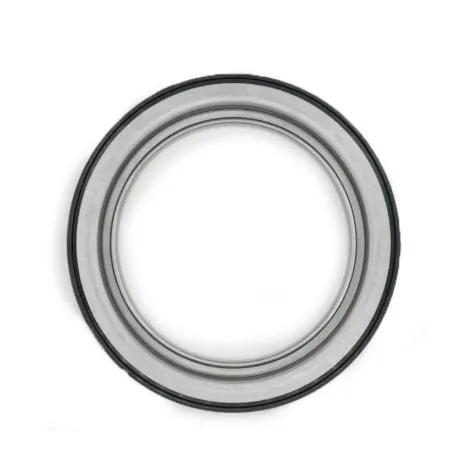Rotary Shaft Seals: Essential Components for Leak-Free Performance
Shaft seals are crucial components in mechanical systems where rotary motion and fluid containment intersect. From marine engines to industrial machinery, rotary shaft seals—also known as rotary seals—prevent oil, grease, and other fluids from leaking while keeping dust and contaminants out. Whether you're exploring dripless shaft seal technology or looking for shaft seals by size, understanding these parts is vital for efficient and long-lasting equipment operation.

What Are Shaft Seals and How Do They Work?
A shaft seal is a device designed to fit around a rotating shaft and create a tight seal between the shaft and its housing. The goal is to prevent leakage of fluids while allowing the shaft to spin freely.
Types of Shaft Seals
Rotary shaft seals: Used in engines, pumps, gearboxes, and motors to retain lubricants and exclude contaminants.
Dripless shaft seal: A modern marine solution that prevents water from leaking into a boat’s hull where the propeller shaft exits.
Radial lip seals: Common type of rotary seals, typically made of rubber with a spring-loaded lip to maintain contact with the shaft.
Functionality
Rotary shaft seals work by maintaining a precise contact between the lip of the seal and the rotating shaft. This contact controls lubricant flow and keeps contaminants out. The seals are engineered to handle pressure, temperature, and the speed of the rotating shaft.
Materials Used
Nitrile rubber (NBR)
Fluoroelastomer (Viton)
PTFE (Teflon) for high-speed or chemical applications
Silicone for high temperature environments
The choice of material impacts performance, durability, and resistance to chemicals or heat.
Applications and Advantages of Rotary Shaft Seals
Rotary shaft seals are found in nearly every piece of rotating equipment, from cars and boats to industrial turbines and agricultural machines.
Common Applications
Automotive engines (crankshaft, camshaft seals)
Marine drive systems (dripless shaft seal for boats)
Pumps and compressors
Wind turbines
Manufacturing equipment
Kelebihan
Enhanced equipment lifespan by retaining lubrication
Prevent oil or water leaks that could cause damage or safety hazards
Protect internal components from dirt and dust
Reduce maintenance frequency and downtime
For boat owners, a dripless shaft seal is especially valuable, as it offers a cleaner, safer, and more reliable alternative to traditional stuffing boxes. These seals use either mechanical or lip-sealing systems to eliminate water ingress entirely.
Selecting the Right Shaft Seal: Size and Specification
Choosing the correct shaft seal involves more than just picking a material—it must also fit the application and shaft dimensions precisely.
Shaft Seals by Size
You can find shaft seals by size to match exact dimensions:
Inside diameter (ID): matches the shaft
Outside diameter (OD): fits the bore or housing
Width: affects seal stability and pressure rating
Using the correct size ensures proper sealing performance and reduces premature wear or leakage.
Key Factors to Consider
Rotational speed of the shaft
Operating temperature
Pressure conditions
Exposure to chemicals or fluids
Axial vs. radial movement (axial seals are needed if the shaft moves back and forth)
A misfitting or incorrectly rated seal can quickly wear out, leak, or cause shaft damage.
In some cases, standard rotary seals may not meet the application's needs. Manufacturers offer custom or semi-custom seal solutions with reinforced housings, multiple lips, or specialty materials for extreme conditions.
Rotary shaft seals, including dripless shaft seal options and shaft seals by size, are essential for ensuring the longevity and reliability of mechanical systems. Whether for automotive, marine, or industrial use, choosing the right rotary shaft seal requires a clear understanding of your system’s demands. Proper selection, installation, and maintenance can prevent leaks, reduce wear, and improve equipment efficiency across a range of applications.
-
Seal 12x20x5: Precision Radial Shaft Seals for Industrial Reliability
Berita Nov.24,2025
-
Seal 12x18x5: Essential Guide to Specifications, Applications & Vendors
Berita Nov.24,2025
-
Understanding Seal 12 20 5: Applications, Specifications & Industry Insights
Berita Nov.23,2025
-
Durable Oil Seal 85x110x12 – Reliable Sealing Solutions for Industry
Berita Nov.23,2025
-
Durable and Precise Oil Seal 75x95x10 for Efficient Machinery | YJM Seal
Berita Nov.22,2025
-
Durable Oil Seal 75x100x10 for Reliable Industrial Performance | YJM Seal
Berita Nov.22,2025
-
High-Quality Oil Seal 65x90x10 | Durable & Reliable Sealing Solutions
Berita Nov.22,2025
Kategori produk















